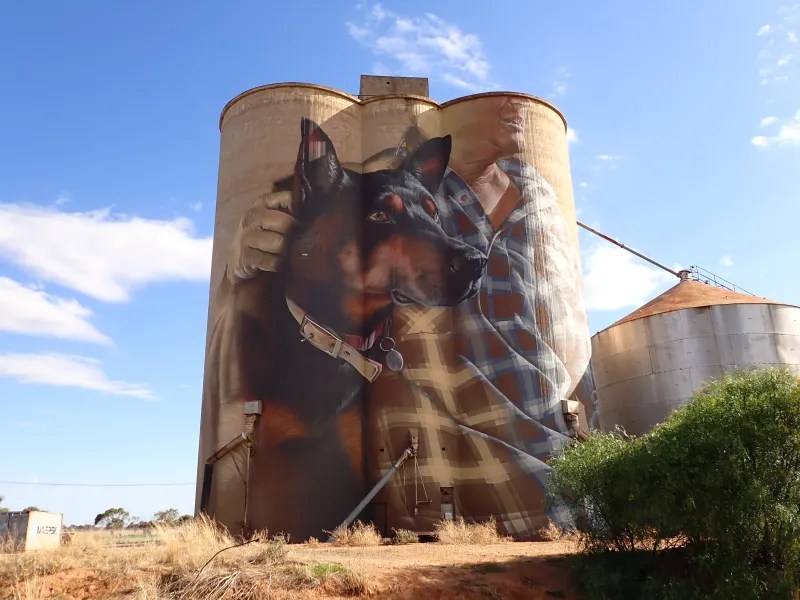
On the road to Sea Lake there is the little settlement of Nullawil with its beautifully painter silo.
This is the eastern most point on the Victorin Silo Art Trail. The trail covers around 700km of the Wimmera Mallee region and includes 13 painted silos.
As this was only a short trip I can only offer a sample of the artwork.
Nullawil
Sea Lake
Sea Lake has some beautiful street murals as well.
Heading south west from Sea Lake the village of Lascelles has the next painted silo.
Then running south there is Roseberry
Then Brim, the first of the silos to be painted and completed in 2016
The last silo on this trip was in Rupanyap.
As you can imagine this is grain growing country. Mainly wheat but also other grains and pulses.
At Murtoa, there is ‘the stick shed’. A huge grain storage shed with a floor space of 1.5 ha and the roof held up by massive poles or sticks.
There were many of these sheds built around Australia in the 1940s but this is the last surviving “stick shed”. It’s a wonderful piece of Australian national heritage.
For more information on the Victorian Silo Art Trail go to: http://siloarttrail.com